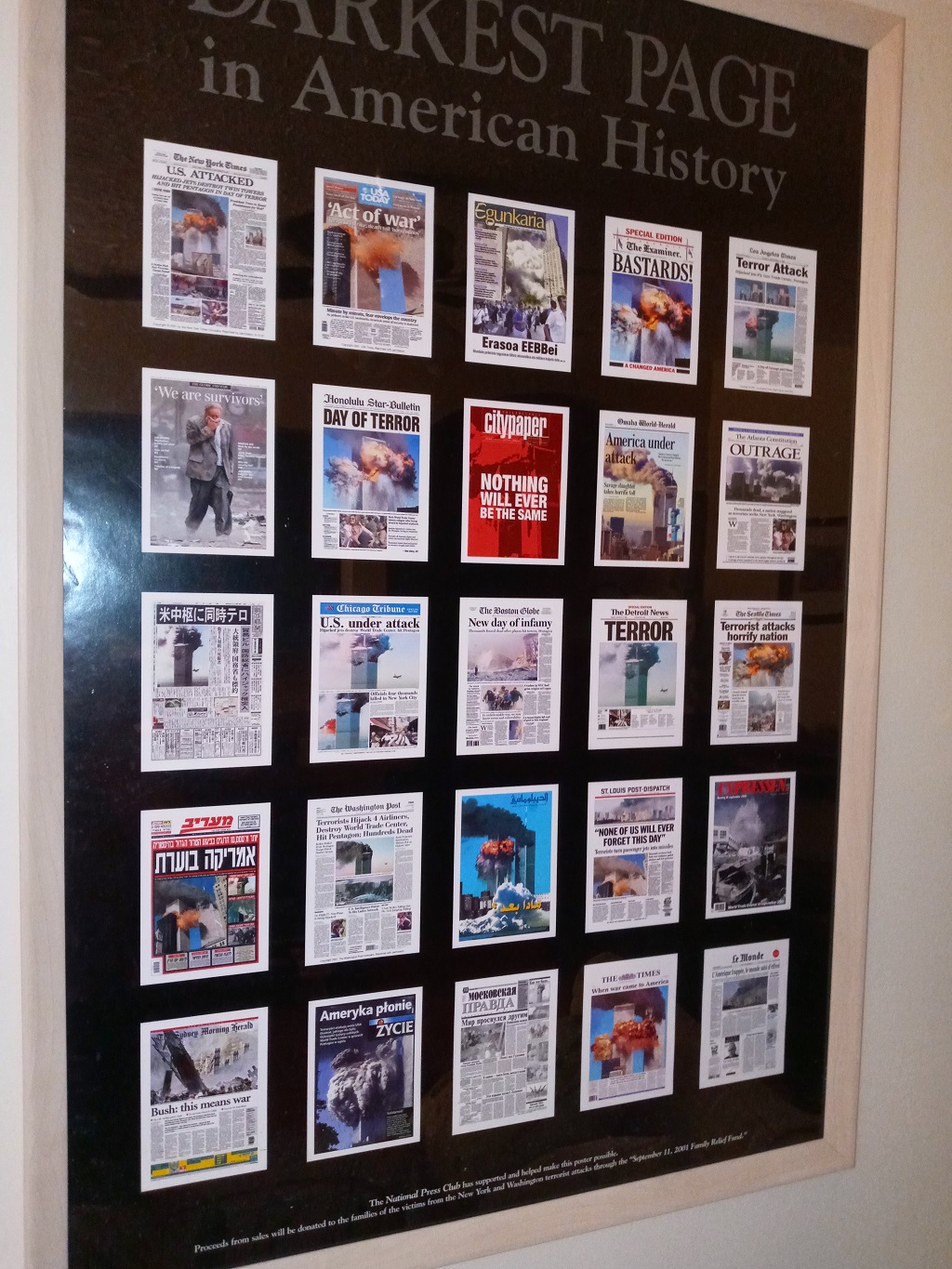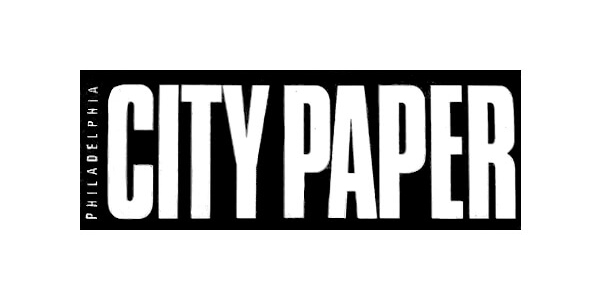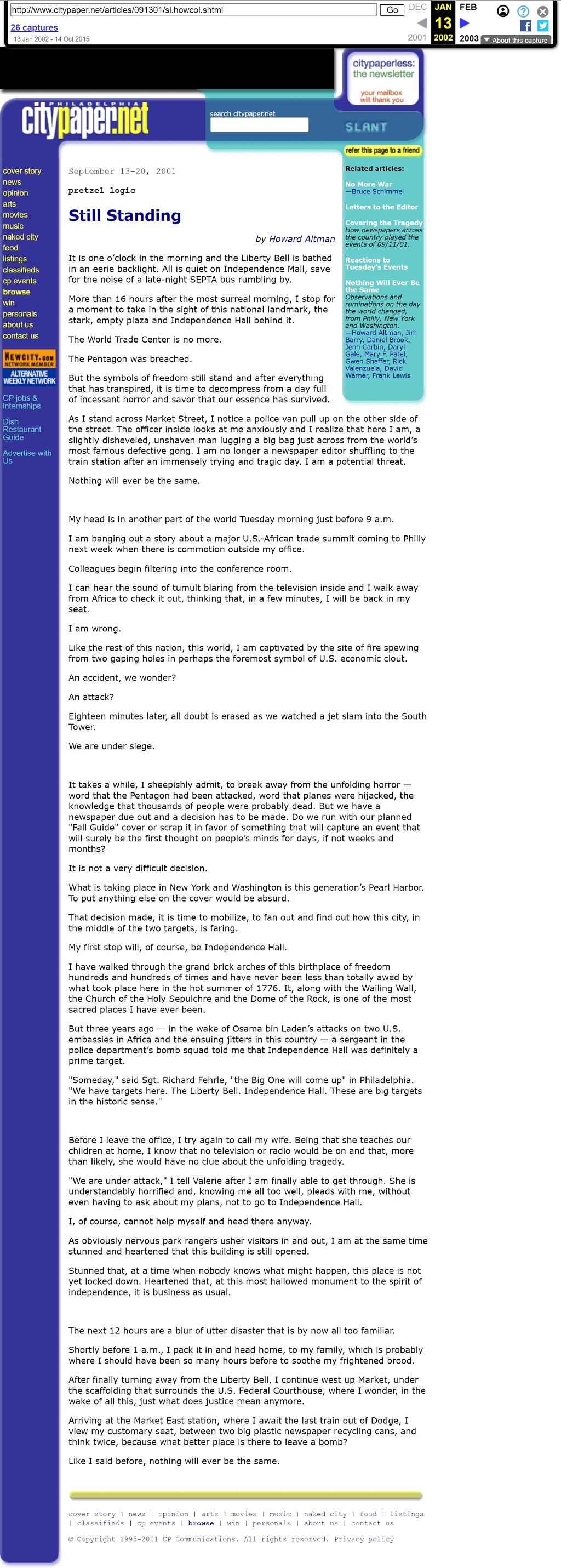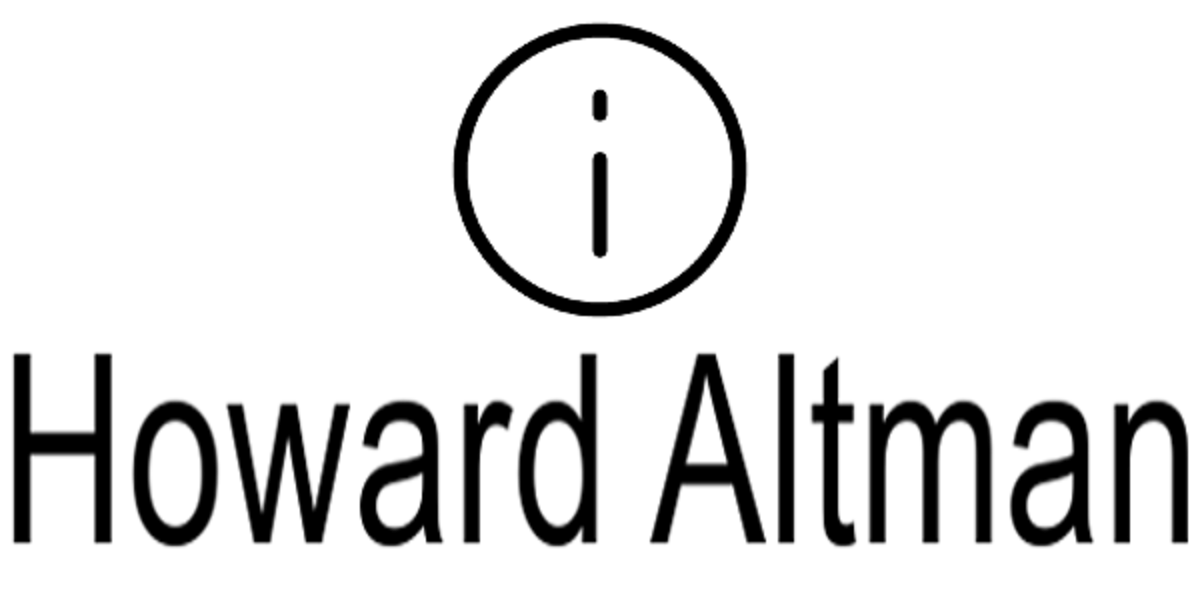Pretzel Logic

It is one o’clock in the morning and the Liberty Bell is bathed in an eerie backlight. All is quiet on Independence Mall, save for the noise of a late-night SEPTA bus rumbling by.
More than 16 hours after the most surreal morning, I stop for a moment to take in the sight of this national landmark, the stark, empty plaza and Independence Hall behind it.
The World Trade Center is no more.
The Pentagon was breached.
But the symbols of freedom still stand and after everything that has transpired, it is time to decompress from a day full of incessant horror and savor that our essence has survived.
As I stand across Market Street, I notice a police van pull up on the other side of the street. The officer inside looks at me anxiously and I realize that here I am, a slightly disheveled, unshaven man lugging a big bag just across from the world’s most famous defective gong. I am no longer a newspaper editor shuffling to the train station after an immensely trying and tragic day. I am a potential threat.
Nothing will ever be the same.
My head is in another part of the world Tuesday morning just before 9 a.m.
I am banging out a story about a major U.S.-African trade summit coming to Philly next week when there is commotion outside my office.
Colleagues begin filtering into the conference room.
I can hear the sound of tumult blaring from the television inside and I walk away from Africa to check it out, thinking that, in a few minutes, I will be back in my seat.
I am wrong.
Like the rest of this nation, this world, I am captivated by the site of fire spewing from two gaping holes in perhaps the foremost symbol of U.S. economic clout.
An accident, we wonder?
An attack?
Eighteen minutes later, all doubt is erased as we watched a jet slam into the South Tower.
We are under siege.
It takes a while, I sheepishly admit, to break away from the unfolding horror — word that the Pentagon had been attacked, word that planes were hijacked, the knowledge that thousands of people were probably dead. But we have a newspaper due out and a decision has to be made. Do we run with our planned “Fall Guide” cover or scrap it in favor of something that will capture an event that will surely be the first thought on people’s minds for days, if not weeks and months?
It is not a very difficult decision.
What is taking place in New York and Washington is this generation’s Pearl Harbor. To put anything else on the cover would be absurd.
That decision made, it is time to mobilize, to fan out and find out how this city, in the middle of the two targets, is faring.
My first stop will, of course, be Independence Hall.
I have walked through the grand brick arches of this birthplace of freedom hundreds and hundreds of times and have never been less than totally awed by what took place here in the hot summer of 1776. It, along with the Wailing Wall, the Church of the Holy Sepulchre and the Dome of the Rock, is one of the most sacred places I have ever been.
But three years ago — in the wake of Osama bin Laden’s attacks on two U.S. embassies in Africa and the ensuing jitters in this country — a sergeant in the police department’s bomb squad told me that Independence Hall was definitely a prime target.
“Someday,” said Sgt. Richard Fehrle, “the Big One will come up” in Philadelphia. “We have targets here. The Liberty Bell. Independence Hall. These are big targets in the historic sense.”
Before I leave the office, I try again to call my wife. Being that she teaches our children at home, I know that no television or radio would be on and that, more than likely, she would have no clue about the unfolding tragedy.
“We are under attack,” I tell Valerie after I am finally able to get through. She is understandably horrified and, knowing me all too well, pleads with me, without even having to ask about my plans, not to go to Independence Hall.
I, of course, cannot help myself and head there anyway.
As obviously nervous park rangers usher visitors in and out, I am at the same time stunned and heartened that this building is still opened.
Stunned that, at a time when nobody knows what might happen, this place is not yet locked down. Heartened that, at this most hallowed monument to the spirit of independence, it is business as usual.
The next 12 hours are a blur of utter disaster that is by now all too familiar.
Shortly before 1 a.m., I pack it in and head home, to my family, which is probably where I should have been so many hours before to soothe my frightened brood.
After finally turning away from the Liberty Bell, I continue west up Market, under the scaffolding that surrounds the U.S. Federal Courthouse, where I wonder, in the wake of all this, just what does justice mean anymore.
Arriving at the Market East station, where I await the last train out of Dodge, I view my customary seat, between two big plastic newspaper recycling cans, and think twice, because what better place is there to leave a bomb?
Like I said before, nothing will ever be the same.


